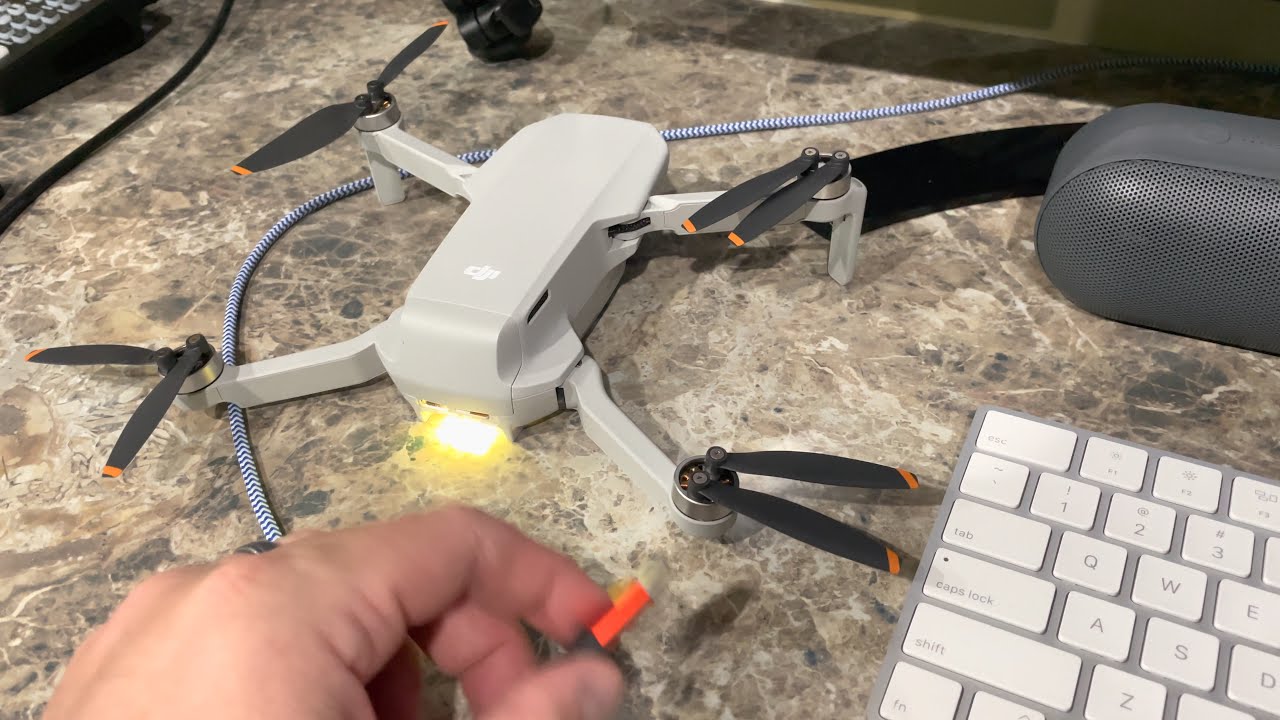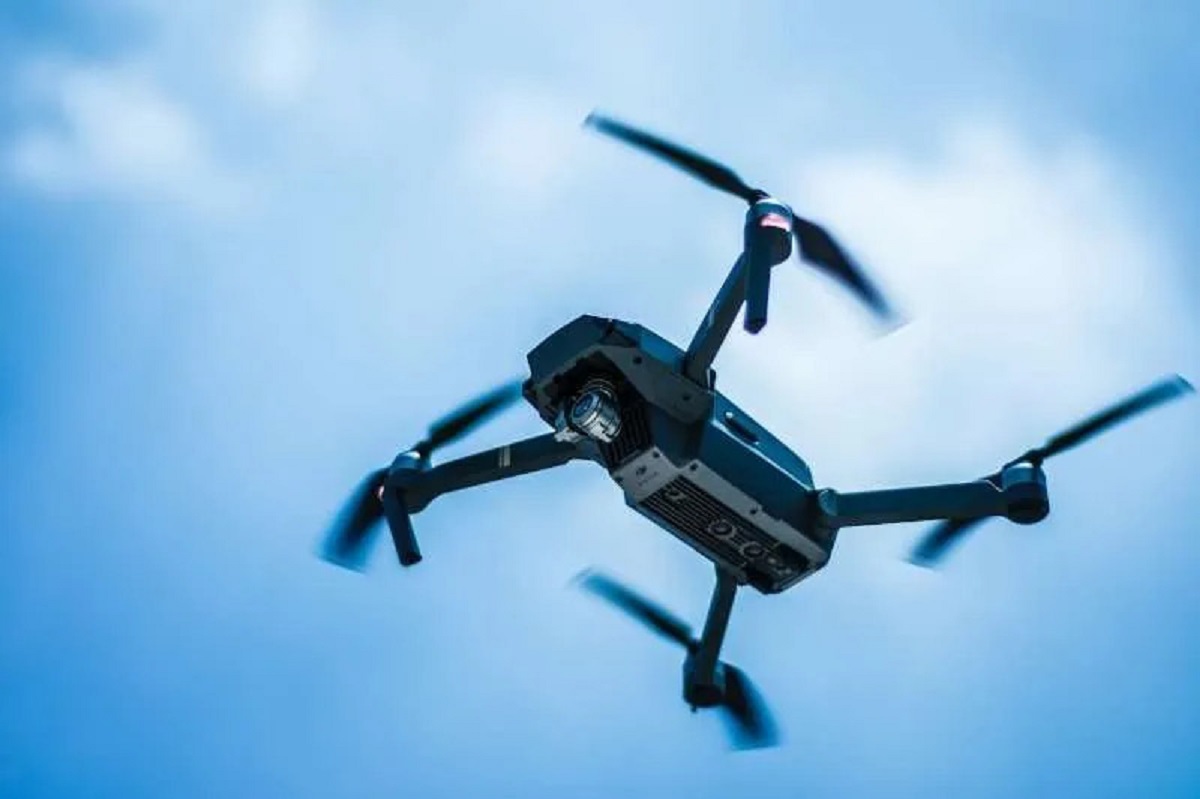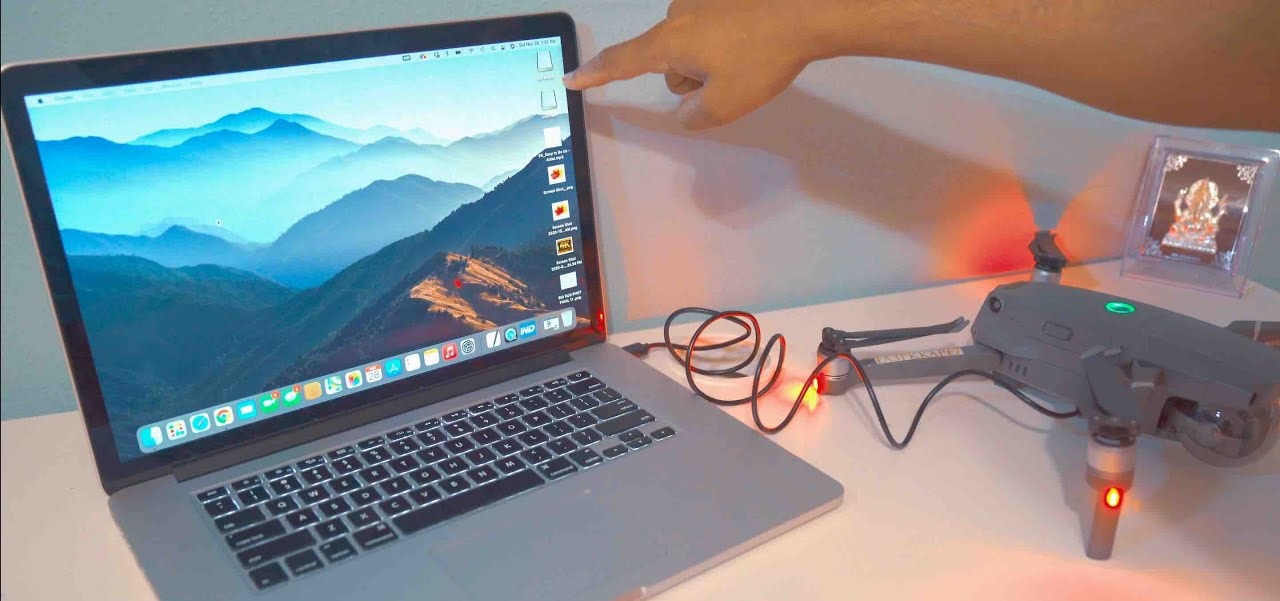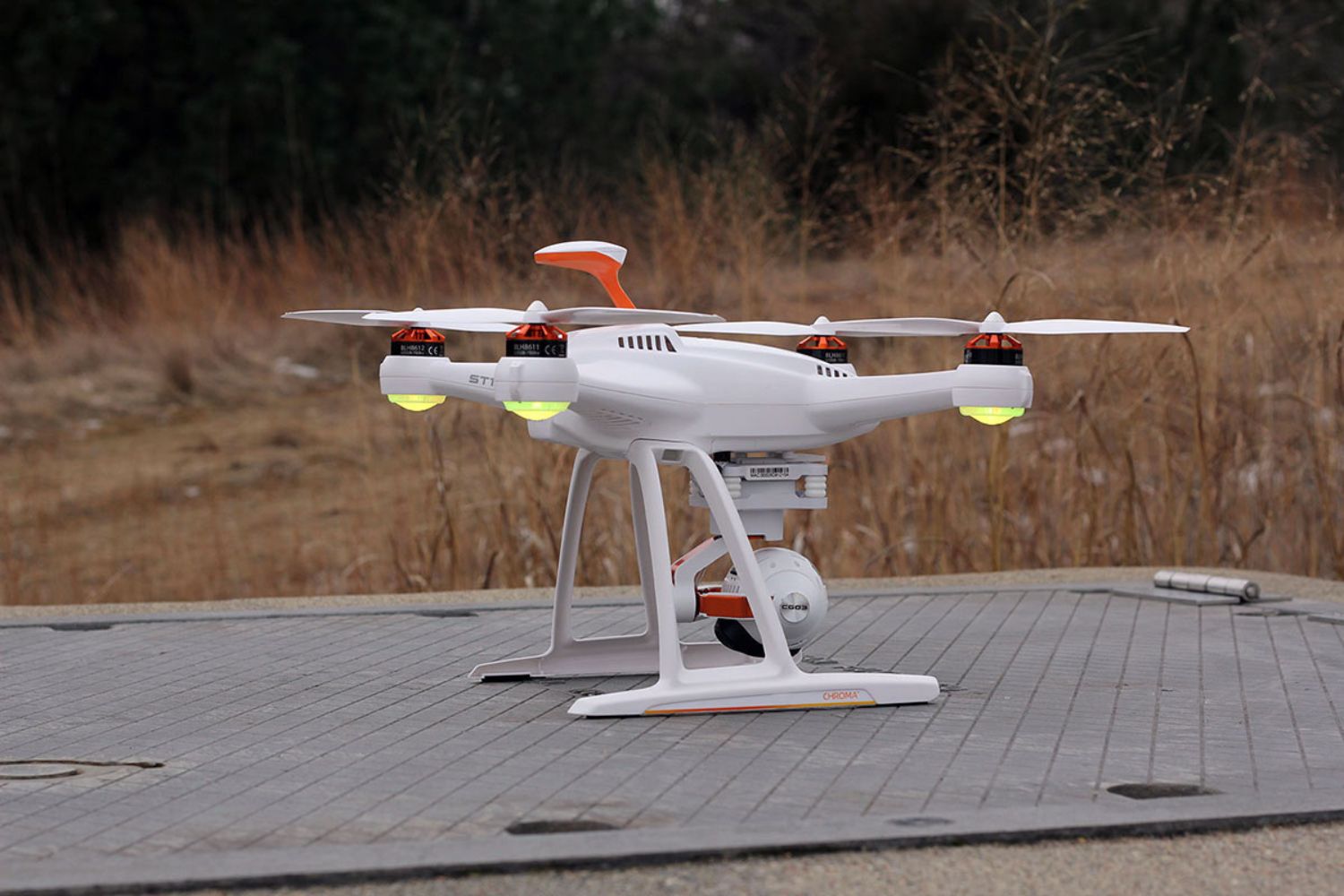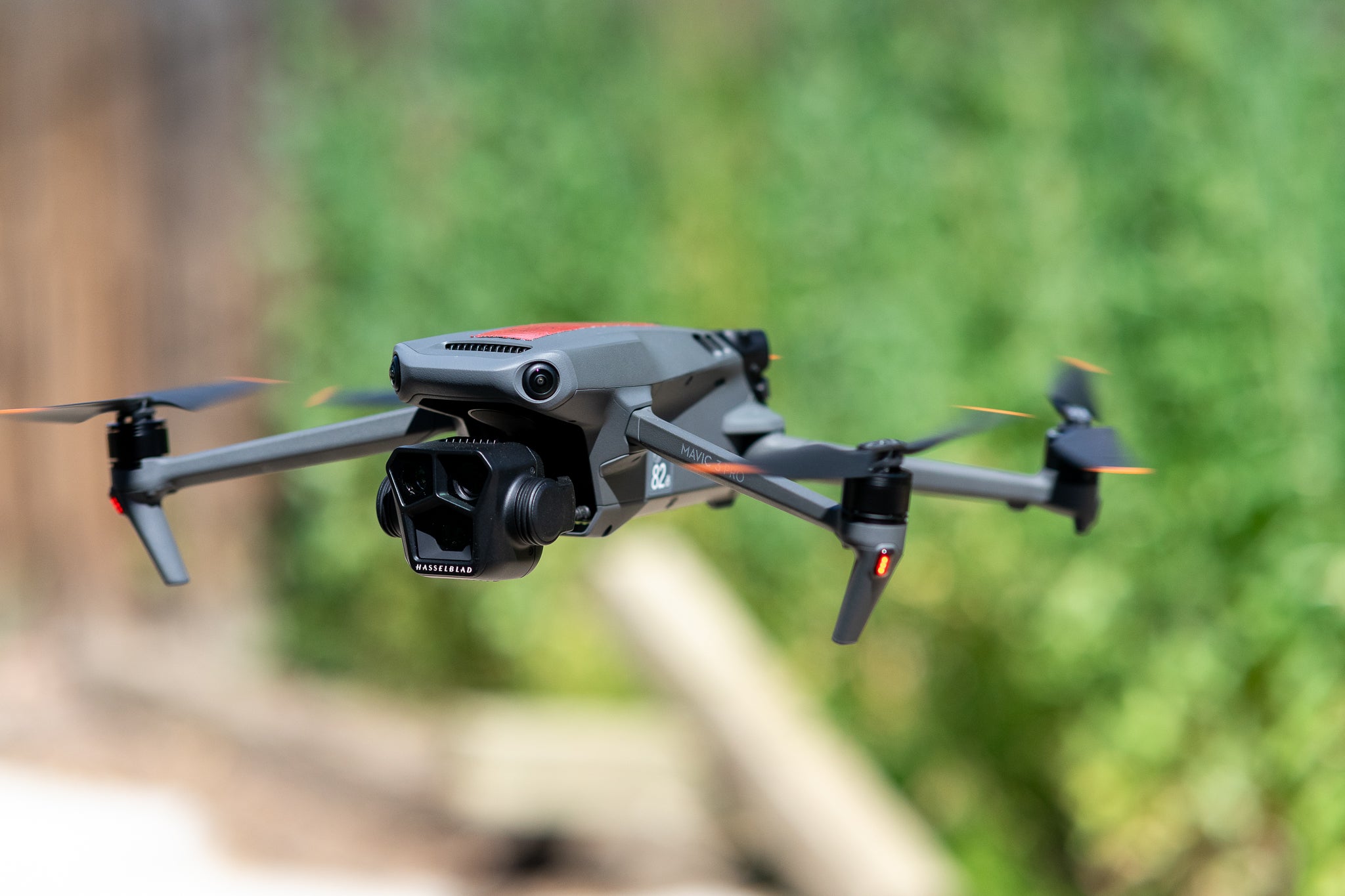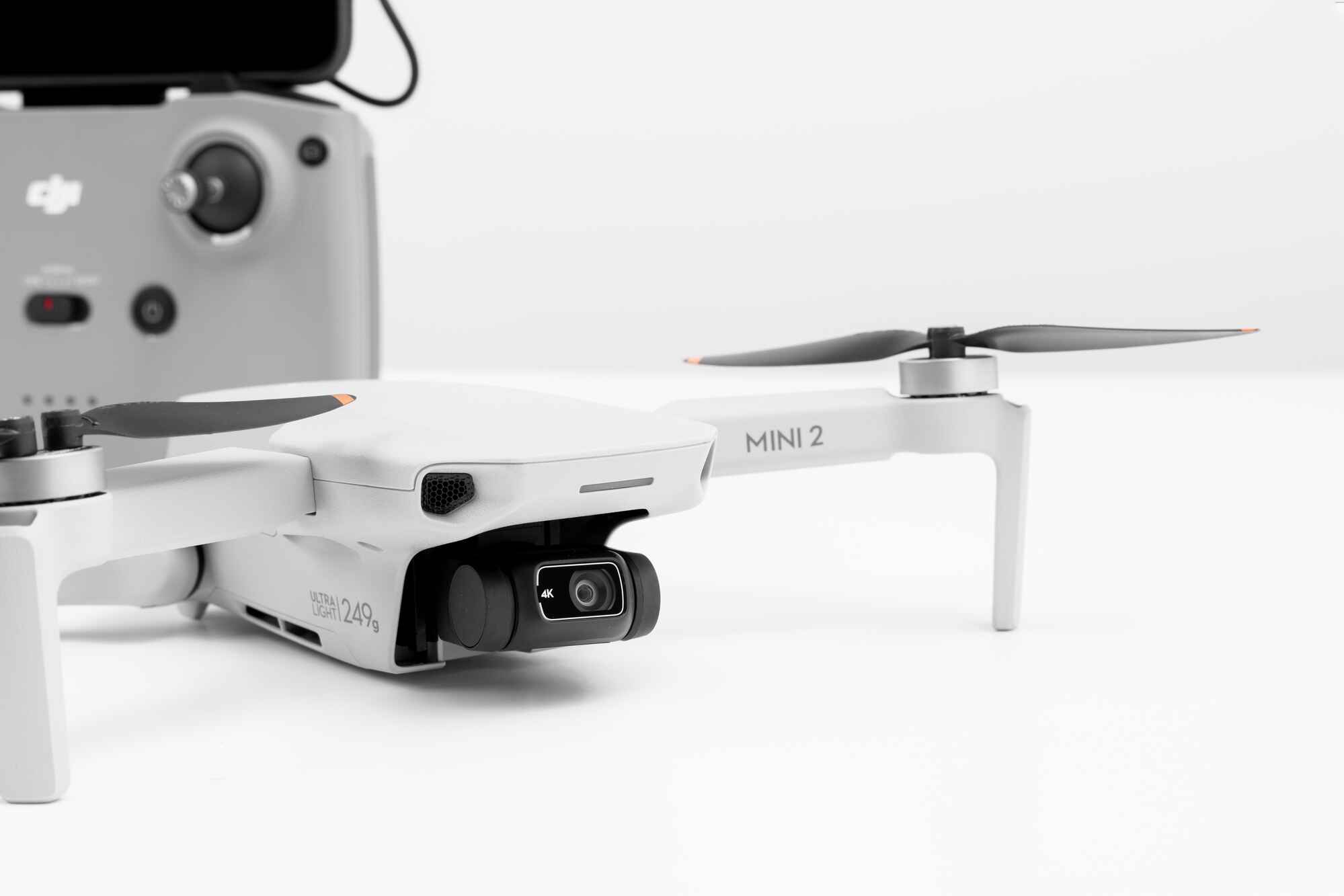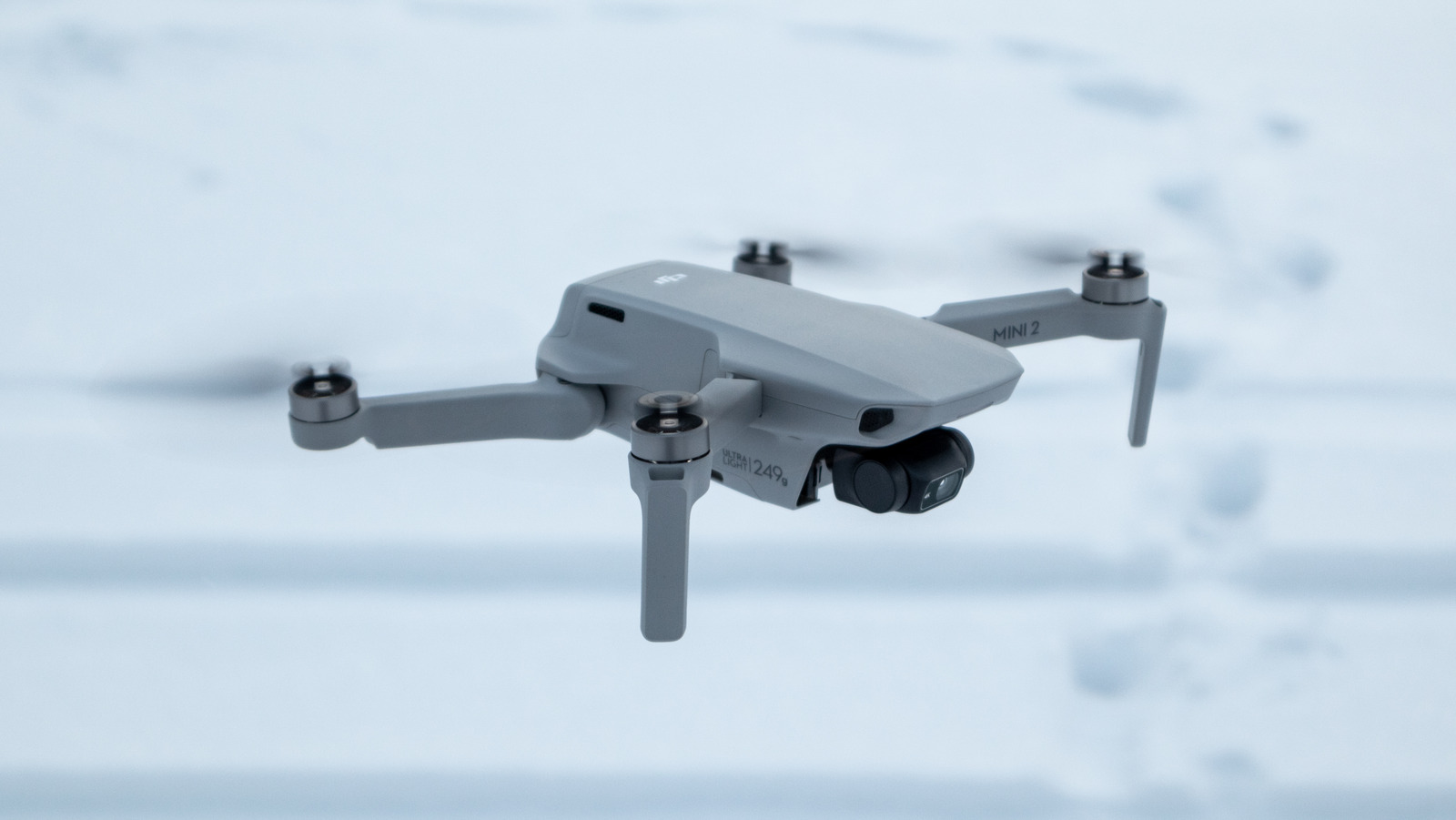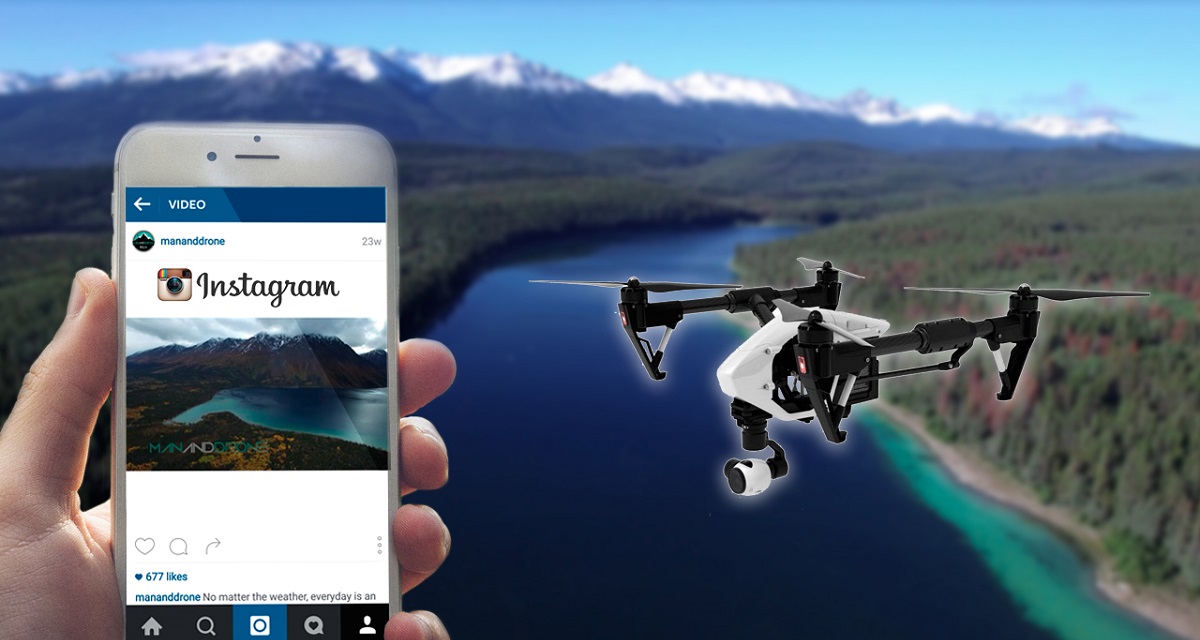Introduction
Welcome to the world of drone footage! Drones have revolutionized the field of videography, allowing for breathtaking aerial shots that were once only possible with expensive equipment. Whether you’re an amateur filmmaker or a professional, utilizing drone footage can add a whole new dimension to your videos.
In this article, we’ll explore various ways you can make the most out of your drone footage. From choosing the right footage to editing techniques, adding music and sound effects, creating stunning transitions, and incorporating it into different types of videos, we’ve got you covered.
Drone footage offers a unique perspective, capturing breathtaking landscapes, impressive aerial views of cities, and dynamic shots that can enhance the storytelling of any video project. By mastering the art of working with drone footage, you can create visually stunning content that engages and captivates your audience.
Whether you’re shooting a travel vlog, a real estate video, a music video, or simply looking for impressive B-roll footage, we’ll cover it all. So, let’s dive in and unlock the full potential of your drone footage!
Choosing the Right Drone Footage
When working with drone footage, it’s important to start with selecting the right clips for your project. Here are some tips on how to choose the most suitable drone footage:
- Define Your Purpose: Determine the purpose of your video and the specific shots you need. Are you looking for wide aerial views to showcase a location, or do you need close-up shots for a more intimate perspective? Clearly defining your purpose will help narrow down your options.
- Consider Composition: Look for drone footage that has a strong composition. Framing, leading lines, and balance are crucial elements to consider. Seek out shots with visually appealing elements, such as interesting landmarks, patterns, or natural formations.
- Think about Storytelling: Can the drone footage tell a story or enhance the narrative of your video? Look for shots that can contribute to the overall storytelling aspect of your project. For example, if you’re creating a travel video, search for footage that showcases the journey or highlights the key moments.
- Technical Quality: Check the technical quality of the footage. Make sure it is clear, stable, and free from any distortion. Look for clips with good lighting, proper exposure, and sharp focus. This will ensure that the overall video maintains a professional and polished look.
- Adaptability: Consider how well the chosen footage will blend with your existing footage or other shots you plan to incorporate. Look for drone footage that seamlessly integrates with your overall vision and style.
By being mindful of these factors, you can choose drone footage that aligns with your creative vision and elevates the overall quality of your video project. Remember, the right drone footage can make a significant difference in the impact and visual appeal of your final video.
Editing Techniques for Drone Footage
Once you have selected the perfect drone footage for your project, it’s time to bring it to life through the editing process. Here are some editing techniques to enhance your drone footage:
- Trimming and Stabilizing: Start by trimming any unnecessary footage and stabilizing shaky shots. This will help to create a smoother and more professional-looking video. Consider using software tools or plugins specifically designed for stabilizing drone footage.
- Color Grading: Apply color grading to enhance the visual impact of your drone footage. You can create a specific mood or atmosphere by adjusting the color temperature, contrast, saturation, and other color attributes. Experiment with different color presets or create your custom grading to achieve the desired effect.
- Speed Ramping: Speed ramping is a technique that involves gradually increasing or decreasing the speed of a clip. This can add a dynamic and cinematic feel to your drone footage. Use speed ramping to highlight specific moments or create smooth transitions between different shots.
- Adding Filters and Effects: Experiment with filters and effects to give your drone footage a unique look or style. Apply effects such as vignettes, film grain, or lens flares to create a visually captivating experience. However, make sure to use these effects sparingly and in a way that enhances rather than distracts from the overall video.
- Seamless Transitions: Create smooth and seamless transitions between drone shots and other footage to maintain a fluid visual flow. Use techniques like crossfades, dissolves, or match cuts to transition between shots effortlessly. This will make your video more engaging and cohesive.
- Adding Text and Graphics: Incorporate text and graphics into your drone footage to provide information or enhance storytelling. Use text overlays for titles, subtitles, or location tags. Add logos, icons, or graphics to highlight specific elements or provide additional context.
- Syncing with Music and Sound Effects: Pair your drone footage with the right music and sound effects to create an immersive experience. Choose a soundtrack that complements the mood and style of your video. Sync certain shots or transitions with beats or specific audio cues to add an extra layer of impact.
By implementing these editing techniques, you can transform your drone footage into a visually stunning and captivating video. Remember, experimentation is key to finding the perfect balance and realizing the full potential of your footage.
Adding Music and Sound Effects to Drone Footage
Music and sound effects play a crucial role in enhancing the overall impact and emotion of your drone footage. Here are some tips to effectively incorporate music and sound effects into your videos:
- Choose the Right Music: Select music that matches the mood, tone, and style of your video. Whether you need a dramatic orchestral score or an upbeat track, ensure that it complements the visuals and enhances the storytelling. Consider using royalty-free music libraries or hiring a composer to create custom music for your project.
- Consider Timing and Tempo: Sync the music to the pace and rhythm of your footage. Align impactful moments or transitions with musical beats or accents to create a more immersive experience. Experiment with different tempos and musical styles to find the perfect match.
- Enhance the Soundscape: Besides music, incorporating ambient sound effects can add depth and realism to your drone footage. Include sound effects like birds chirping, wind blowing, or cars passing by to create a more immersive auditory experience. You can find royalty-free sound effect libraries online or record your own to ensure uniqueness.
- Establish Audio Balance: Ensure a proper balance between the music and the sound effects. Make sure the music doesn’t overpower the natural sounds or dialogues, allowing them to shine through. Experiment with audio levels and mix them to achieve the desired balance.
- Transitions and Impact: Use music and sound effects to highlight specific moments or accentuate transitions in your drone footage. Fade in or out the music to smoothly transition between different shots or scenes. Consider using sound effects to emphasize important actions or events captured in the footage.
- Consider Copyright and Licensing: It’s crucial to use music and sound effects that you have the rights to or are permitted to use. Avoid copyright infringement by using royalty-free music or obtaining the necessary licenses for copyrighted tracks. This will protect you from legal issues and ensure that you can share your video without any restrictions.
By carefully selecting the right music and sound effects, and skillfully incorporating them into your drone footage, you can create a truly immersive and impactful viewing experience. Sound can enhance the emotions and storytelling in your video, making it an essential element to consider during the editing process.
Creating Stunning Transitions with Drone Footage
Transitions are an effective way to make your drone footage visually appealing and seamlessly connect different shots. Here are some techniques to create stunning transitions with your drone footage:
- Aerial to Ground: Transitioning from an aerial shot to a ground-level shot can create a sense of scale and perspective. Start with a wide or overhead shot and smoothly transition to a close-up or mid-range shot on the ground to add variety and intrigue.
- Reveal or Hide: Use drone footage to reveal or hide a subject or location. Start with a shot that partially obscures the subject and gradually move the drone to reveal the complete view. Alternatively, start with a wide shot and gradually fly the drone to hide or obscure elements within the frame.
- Fly-Through: This technique involves flying the drone smoothly through a specific object, such as a gap between buildings, trees, or other structures. It creates a sense of immersion and adds a dynamic element to your footage. Ensure careful planning and precise piloting to execute this transition effectively.
- Split Screen: Combine multiple drone shots or different perspectives in a split-screen format. This technique allows for direct visual comparisons or to showcase different angles simultaneously. It can be used to emphasize contrast or complementing elements in your footage.
- Match Cut: Create a seamless transition by matching the movement or composition between two shots. For example, you can match the movement of clouds or objects in the frame to create a smooth transition. This technique helps maintain continuity and flow in your video.
- Time-Lapse Effects: Speed up footage or use time-lapse effects to transition between different times of the day or capture changes over a longer period. This technique adds a unique element to your transitions and can emphasize the passing of time or capture the beauty of a changing environment.
- Overhead to Ground: Start with an overhead shot and gradually descend the drone to transition to a ground-level perspective. This transition can be particularly effective in highlighting the details or features of a location or subject.
Experiment with these techniques to create stunning transitions in your drone footage. Remember to plan your shots carefully and ensure smooth piloting and precise editing techniques to achieve a polished and visually captivating result. Transitions add depth and interest to your video, elevating the overall viewing experience.
Using Drone Footage for B-Roll Footage
Drone footage is an excellent resource for capturing dynamic and unique B-roll footage. B-roll footage refers to supplementary footage used to add visual interest and context to a video. Here are some ways to effectively use drone footage as B-roll:
- Establishing Shots: Use drone footage to capture wide aerial shots of a location as an establishing shot. These shots provide a sense of place and set the scene for your video. Whether it’s a cityscape, natural landscape, or architectural marvel, these shots can instantly grab the viewer’s attention.
- Smooth Traditional Movements: Drone footage can provide smooth, cinematic movements that would typically require cumbersome equipment. Use it to capture smooth pans, tilts, and tracking shots without the need for cranes, dollies, or sliders. These shots can add a professional and polished look to your video.
- Subject Tracking: Follow a subject or object with the drone to create dynamic and engaging footage. Whether it’s a moving vehicle, a person walking, or wildlife in action, drone footage can provide unique perspectives and compelling tracking shots.
- Aerial Perspectives: Use drone footage to capture stunning aerial perspectives of various subjects. Whether it’s a sports event, a bustling city street, or a natural landmark, aerial B-roll footage provides a captivating view that can’t be achieved with traditional cameras.
- Point-of-View Shots: Add an immersive element to your videos by using drone footage for point-of-view shots. This technique can give viewers a sense of flying or experiencing the scene from the perspective of the drone. It adds excitement and a unique perspective to your video.
- Time-Lapse Segments: Utilize the time-lapse feature of your drone to capture intriguing time-lapse footage. This can be used to showcase the passage of time, changes in weather and lighting conditions, or to capture the transformation of a scene.
- Creative Transitions: Seamlessly transition between different scenes or shots using drone footage. This can include flying over rooftops, through windows, or gliding through natural elements like trees or clouds. These transitions can add visual interest and keep your audience engaged.
By incorporating drone footage as B-roll, you can bring a fresh and unique visual perspective to your videos. It adds depth, excitement, and a professional touch that enhances the overall storytelling and visual appeal of your content. Remember to use drone footage strategically to ensure it complements and enhances your main footage without overshadowing it.
Incorporating Drone Footage in Aerial Montages
Aerial montages are a fantastic way to showcase the beauty and grandeur of a location from unique perspectives. Incorporating drone footage into your aerial montages can elevate them to new heights. Here are some tips for using drone footage in aerial montages:
- Plan Your Shots: Before capturing drone footage for an aerial montage, create a shot list or storyboard to ensure you capture a variety of angles and movements. Plan your flights and movements carefully to capture diverse and visually appealing shots.
- Choose Different Altitudes: Experiment with different altitudes when filming your aerial montage. Shoot from high altitudes to capture expansive views, and then lower the drone for more intimate and detailed shots. Varying altitudes will add depth and visual interest to your montage.
- Focus on Transitions: Pay special attention to transitions between shots in your aerial montage. Smooth and seamless transitions between different drone shots can create a visually stunning and cohesive sequence. Use techniques like match cuts or complementary movements to ensure a fluid transition between shots.
- Use Dynamic Movements: Drone footage allows for dynamic and sweeping movements that can make your aerial montage more engaging. Incorporate movements such as flyovers, orbits, or tracking shots to add visual interest and excitement to your montage. These movements can create a sense of energy and movement within the scene.
- Capture Unique Features: Look for unique features or landmarks in the location you are filming. Whether it’s a stunning coastline, architectural marvel, or natural formation, drone footage can capture these features from breathtaking angles that showcase their beauty and uniqueness.
- Showcase Changing Landscapes: If your location experiences changes in weather, lighting, or seasons, use drone footage to capture these changes in your aerial montage. Whether it’s the transition from day to night, the changing colors of foliage, or shifting weather patterns, showcasing these transformations can add a dynamic element to your montage.
- Consider the Pace: The pacing of your aerial montage is crucial. Use drone footage to set the pace and rhythm of your montage. Combine slower and more contemplative shots with faster and more dynamic shots to create an ebb and flow that captures the viewers’ attention throughout the montage.
By incorporating drone footage into your aerial montages, you can create visually captivating sequences that highlight the beauty and grandeur of a location. Remember to plan your shots carefully, pay attention to transitions, and use dynamic movements to create a visually stunning and engaging aerial montage.
Integrating Drone Shots in Travel Videos
Drone shots have become an essential element in travel videos, adding a captivating and immersive perspective that takes viewers on a visual journey. Here are some tips for effectively integrating drone shots in your travel videos:
- Establishing Shots: Use drone shots as establishing shots to set the scene and introduce the location. Start with a wide aerial view that showcases the destination’s unique features, such as landmarks, coastlines, or sprawling landscapes. This provides viewers with a sense of place and captures their attention from the start.
- Reveal Hidden Gems: Drones can access hard-to-reach places or showcase hidden, off-the-beaten-path attractions. Use your drone to reveal these hidden gems, such as secluded beaches, hidden waterfalls, or rooftop views that offer a unique perspective. This adds an element of discovery and intrigue to your travel video.
- Follow the Journey: Incorporate drone shots to follow the journey or movement of your subject. Whether it’s capturing a hike through a mountain trail, a boat ride along a scenic river, or a road trip on a winding coastal road, the aerial perspective of the drone can seamlessly track the movement and add an exciting visual element.
- Showcase Scale and Grandeur: Use drone footage to showcase the scale and grandeur of iconic landmarks or vast natural landscapes. Aerial shots can capture the magnitude of mountains, waterfalls, or historic structures, emphasizing their beauty and creating a wow-factor moment in your travel video.
- Layered Perspectives: Combining drone shots with ground-level footage can provide layered perspectives that offer a more complete view of the destination. Transition seamlessly between drone shots and shots taken at eye-level, capturing the essence of the location from different angles and elevations.
- Add Cinematic Elements: Experiment with cinematic techniques such as slow-motion, time-lapse, or aerial tracking shots to create visually stunning moments. These techniques enhance the beauty and impact of your drone footage, making it more engaging and cinematic.
- Focus on Details: Use your drone to capture unique details and textures of a location. Whether it’s the intricate architectural details of a historic building or the vibrant colors of a local market, the aerial perspective can capture these details in a way that adds depth and richness to your travel video.
- Seamless Transitions: Ensure smooth transitions between drone shots and other footage. Use creative editing techniques to seamlessly blend drone shots with ground-level shots or other camera angles. This creates a cohesive and visually pleasing flow that keeps your viewers engaged.
By integrating drone shots in your travel videos, you can elevate the visual storytelling and provide viewers with a unique and captivating experience. Utilize the aerial perspective to showcase the destination’s beauty, culture, and hidden gems, taking your travel videos to new heights.
Enhancing Real Estate Videos with Drone Footage
Drone footage has become an indispensable tool for enhancing real estate videos, capturing stunning aerial views and providing potential buyers with a unique perspective of a property and its surroundings. Here are some ways to effectively incorporate drone footage in your real estate videos:
- Aerial Property Showcase: Use drone shots to showcase the property from different angles and heights. Capture sweeping aerial views that highlight the entire property and its surrounding landscape. This allows potential buyers to get a comprehensive sense of the property’s size, layout, and its relation to nearby amenities.
- Highlight Unique Features: Use drone footage to emphasize the unique features of the property and its surroundings. Showcase attractive outdoor spaces like gardens, pools, or rooftop terraces from above, giving viewers a better understanding of the property’s outdoor amenities.
- Neighborhood and Location: Capture drone shots that showcase the neighborhood and surrounding area. Show nearby parks, schools, shopping centers, or other points of interest to give viewers a sense of what it’s like to live in the area. Highlighting the location’s benefits can be a powerful selling point for potential buyers.
- Smooth Transitions: Seamlessly blend drone shots with interior and ground-level footage to create smooth transitions. Use aerial shots to introduce the property, then smoothly transition to interior shots to give viewers a virtual tour. This creates a cohesive and visually engaging video that showcases the property from various perspectives.
- Panoramic Views: Utilize the panoramic capabilities of your drone to capture breathtaking views from different vantage points. These panoramic shots can capture the property’s surroundings, such as mountains, bodies of water, or city skylines, providing a sense of the wider area and its appeal.
- Highlight Property Features: Use drone footage to highlight specific features of the property, such as a large backyard, a beautiful garden, or a unique architectural design. Aerial shots can provide a different perspective and a comprehensive view of these features, making them stand out in the video.
- Smooth Flyovers: Fly the drone smoothly over the property to create elegant and cinematic flyover shots. This technique can help potential buyers visualize and appreciate the property’s scale, layout, and architectural details.
- Day-to-Night Transitions: Show the property and its surroundings in different lighting conditions by capturing day-to-night transitions with your drone. Showcase the property in various times of the day, such as sunrise, golden hour, or evening. These transitions add depth and visual interest to your real estate video.
By incorporating drone footage in your real estate videos, you can provide potential buyers with a comprehensive and visually captivating experience. Capture the unique features, highlight the property’s surroundings, and create smooth transitions to showcase the property in the best possible way.
Making Cinematic Music Videos with Drone Shots
Drone footage has become an invaluable asset in creating cinematic music videos, adding a visually stunning and dynamic element to accompany the music. Here are some tips for incorporating drone shots in your music videos:
- Plan with the Music: Start by selecting the music for your video and consider its tempo, mood, and lyrics. Use the music as a guide to plan your drone shots, ensuring that the visuals are in sync with the rhythm and emotions conveyed in the song.
- Scouting Locations: Find visually interesting and diverse locations that complement the mood and theme of the music. Look for landscapes, urban areas, or unique structures that can serve as a backdrop for your music video. Use the aerial perspective of the drone to capture these locations from captivating angles.
- Create Dynamic Movements: Use the agility of your drone to its full potential by capturing dynamic movements and camera techniques. Fly the drone in creative patterns, such as orbiting around the subject, diving towards the ground, or tracking movements. These movements add energy and visual interest to your music video.
- Match Visuals with Lyrics or Melodies: Pay attention to the lyrics or melodies of the music and align your drone shots to enhance the storytelling. Use drone footage to visualize the emotions or lyrics conveyed in the song, creating a strong connection between the visuals and the music.
- Embrace Slow Motion: Slow-motion shots can add a dramatic and cinematic effect to your music video. Capture certain moments in slow motion with the drone to accentuate actions, emotions, or impactful scenes. This technique can add a visual punch and create a captivating viewing experience.
- Experiment with Lighting Conditions: Utilize different lighting conditions to create mood and atmosphere in your music video. Shoot during golden hour, at night with city lights, or during dramatic weather conditions to add depth and ambiance. The aerial perspective of the drone can capture the beauty of these lighting conditions from unique angles.
- Seamless Transitions: Create smooth transitions between different shots and scenes to maintain visual flow in your music video. Use the drone’s ability to provide continuous movement and different vantage points to transition seamlessly between shots, enhancing the overall viewing experience.
- Emphasize Symbolism and Metaphors: Use drone shots to create symbolic or metaphorical visuals that align with the themes of the music. For example, capturing birds flying away to represent freedom or using aerial shots to symbolize overcoming obstacles. Incorporating these symbolic elements adds depth and visual storytelling to your music video.
- Post-Production Enhancement: Once you’ve captured your drone footage, enhance it further in post-production. Use color grading, visual effects, and editing techniques to amplify the cinematic look and feel of your music video. Experiment with different styles to find the perfect visual treatment for your video.
By harnessing the power of drone footage in your music videos, you can create visually captivating and cinematic experiences that enhance the emotions and storytelling of the music. Let the drone shots immerse your viewers in a visually stunning world that complements and amplifies the power of the music.
Conclusion
Incorporating drone footage into various types of videos opens up a world of creative possibilities. By choosing the right drone footage, applying effective editing techniques, adding music and sound effects, and strategically integrating drone shots, you can elevate your videos to new heights.
When selecting drone footage, consider the purpose of your video and the composition of the shots. Think about how the footage can enhance storytelling and create a visually appealing experience for your audience. Additionally, ensure that the drone footage is technically sound and adaptable to your project’s needs.
In the editing process, use techniques such as trimming, stabilizing, color grading, and adding effects to enhance the visual impact of your drone footage. Experiment with transitions, text overlays, and audio enhancements to create a seamless and immersive viewing experience.
Drone footage can be especially powerful in specific contexts. Explore how it can enhance the beauty and storytelling of travel videos, provide unique perspectives in real estate showcases, and add cinematic flair to music videos. The aerial vantage point and dynamic movements of drones capture attention and make your videos stand out.
Remember to incorporate drone footage strategically, ensuring that it complements and enhances your main footage without overpowering it. Seamless transitions and a balanced audio mix contribute to a polished and professional final product.
By harnessing the possibilities of drone footage, storytelling and visual impact are taken to new heights. So, take to the skies, capture breathtaking shots, and unlock the full potential of your videos with the art of incorporating drone footage.









